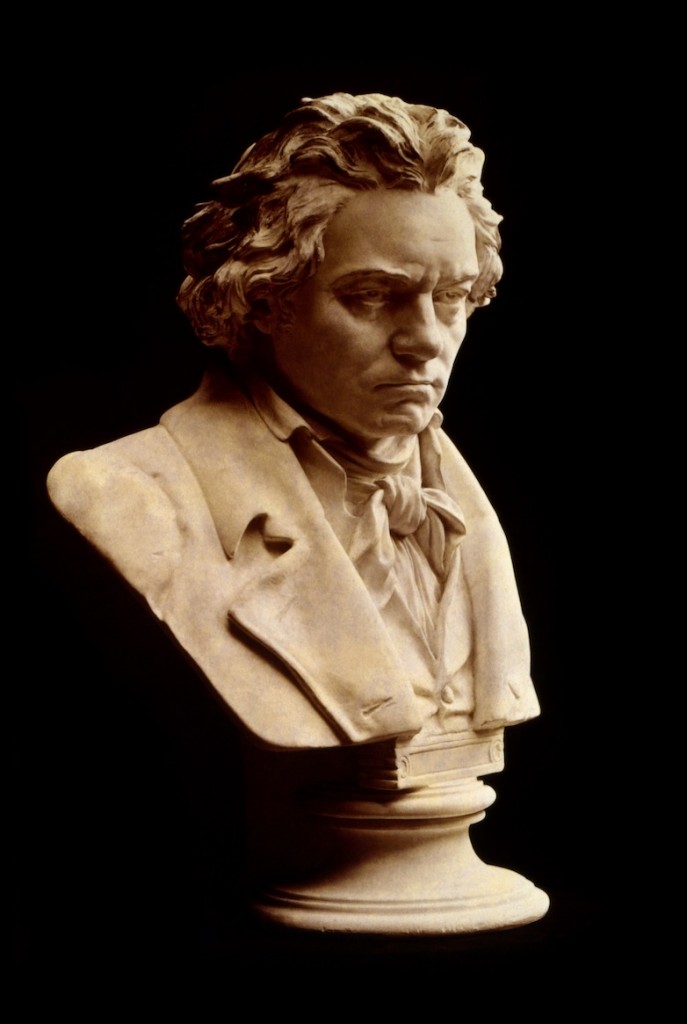Despite rough edges, Boston Baroque’s Beethoven reaches the heights
Humanism and universal brotherhood are the themes that permeate Beethoven’s Ninth Symphony, uplifting messages for any age. Indeed, the piece has become, over the last half-century in particular, a cultural meme for eternal hope and a symbol for new beginnings.
It was fitting, then, that Beethoven’s monumental symphony served as the official opener for Boston Baroque’s 40th anniversary Friday night at Jordan Hall.
Beethoven’s symphonies have been standard fare for America’s first period-instrument orchestra. But Friday’s performance marked their debut with the Ninth, a work that because of its colossal size and scope stands on the very edge of their repertoire. With Martin Pearlman leading the way, the Boston Baroque orchestra, chorus, and a sublime quartet of guest soloists rose to the challenge with a successful, energetic and full-bodied reading.
Compared to the usual beefy, large-scale performances of this symphony, Boston Baroque’s small ensemble size made clear the music’s subtle shadings and textures. The period instruments, though, did not lack for power. The theme of the first movement revealed itself slowly, growing out of the ethereal opening to build to thunderous ensemble statements. Tutti phrases of the second movement Scherzo pulsed in solid blocks of sound.
Precision was sometimes another matter. Pearlman took the Scherzo, one of the trickiest in all of Beethoven’s symphonies, at a bubbly tempo, observing all of the repeats. Winds and strings traded the lilting statements with fine balance, the timpani bursts adding weight. Sweetly-played horn and oboe solos imbued the trio with a pastoral feel. But the sprightly fugal statements of the Scherzo main theme, at times, seemed to pull away from one another, winds and strings struggling to stay in sync.
The gentle phrases of the Adagio unfolded into a tapestry of swirling melodic variations in Pearlman’s deliberate tempo. But the quick approach sometimes resulted in some overly metronomic playing from the ensemble, and the music’s expressive depths went largely unexplored.
That changed when the famous finale got underway. Colorful, crisp, and nimble, the movement featured the ensemble at its most brilliant, pouring out sheets of sound to fill the hall.
A fine quartet of soloists–soprano Leah Partridge, mezzo-soprano Ann McMahon Quintero, tenor William Burden, and bass-baritone Kevin Deas—delivered a radiant “Ode to Joy.” Deas rendered his opening recitative with impeccable diction and ringing voice. Burden brought clarion tone and shapely phrases to the bouncing tenor line in the Turkish march.
The thirty-five members of the Boston Baroque chorus answered with flair. The final verse of Schiller’s poem, “Seid umschlungen, Millionen!” resonated in its declamation; the central chorus, “Freude, schöner Götterfunken,” warmed to a lush vocal blend and swelled to glorious heights.
The concert began in more sorrowful mode with Beethoven’s little-heard Elegiac Song, Op. 118.
Beethoven penned the work in 1814 to commemorate the death of the wife of his friend and former landlord. The short work, originally scored for string quartet and four singers, captures a sense of profound longing.
Pearlman led a small group of singers and strings in a delicate and reverential reading. The chorus and strings performed with pensive, sorrowful tone.
The program repeats 8 p.m. Saturday at Jordan Hall. bostonbaroque.org.
Posted in Performances





